A row of 15 people carrying nets are moving through the long grass and brambles in the wooded Chapelizod end of Phoenix Park, just north of the River Liffey, in Dublin. One of them whistles. They've come across a six-day-old fawn nestled in the long grass. They circle her, just in case she runs. Someone catches hold of her. Someone else covers her eyes – this calms her down – and three people hold her still. It is a "her". They check.
Dr Simone Ciuti, leader of the laboratory of wildlife ecology and behaviour at University College Dublin, steps in with a stethoscope and checks the fawn's heart rate. They take out an electric razor and trim some hair, which they will later test for cortisol. This will tell them how stressed the mother was during her pregnancy. They take a genetic sample. They measure the fawn's head and feet. They note how many kicks she gives, and whether she cries out. Each detail is recorded by Srivats Chari, a master's student, who stands at a slight remove, holding a red clipboard.
Lastly they place the fawn into a zip-up bag that they use to weigh her, then put the bag back on the ground and open it. A little pale-coloured head peeks out and looks around. It casts its big eyes at us for exactly nine seconds (they time her), then steps out and bounces off, right by me, and into the undergrowth.
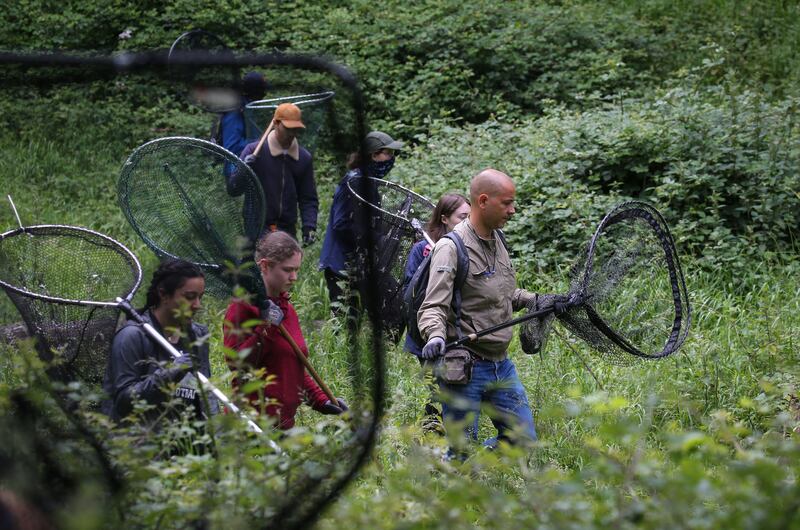
The bounce suggests carefree happiness to me, but Holly English, a PhD student, later tells me that deer do this to signal to predators that they will be a challenge. "She's saying 'Look how fit I am!'"
“She was brave enough to wait nine seconds,” says Ciuti. “Nine seconds to assess the situation, and then she decided to leave.”
This was a “recapture”. The fawn’s ears are already tagged with a green numbered tag. June is the birthing month, and at this stage they have encountered most of the fawns that have been born in the park. The number of fallow deer here will have risen from 500 to about 600 by the end of June.
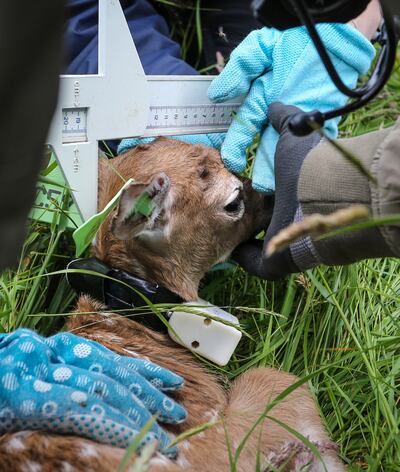
The deer-taggers know all the overgrown areas around the edges of the park where the mothers leave the newborn fawns, returning to feed them daily. The survivors will all join the female herd some time in July. The male and female herds keep to different parts of the park – Acres Road is the dividing line – and they only ever come together to mate in October. Fallow deer have been living in Phoenix Park since the duke of Ormond designated it a hunting park, in 1662.
"They're probably one of the healthiest herds in country," says Terry Moore, a deerkeeper at the Office of Public Works. He explains that they have no real predators here (bar a few foxes and dogs that manage to kill the fawns), and their general wellbeing is ensured by a population-maintaining cull every winter. Moore is, understandably, a deer obsessive. His ringtone is the rutting call of a sika deer. When it rings, Vasou Ioannidis, a Canadian intern, jumps. "It scares me every time," she says.
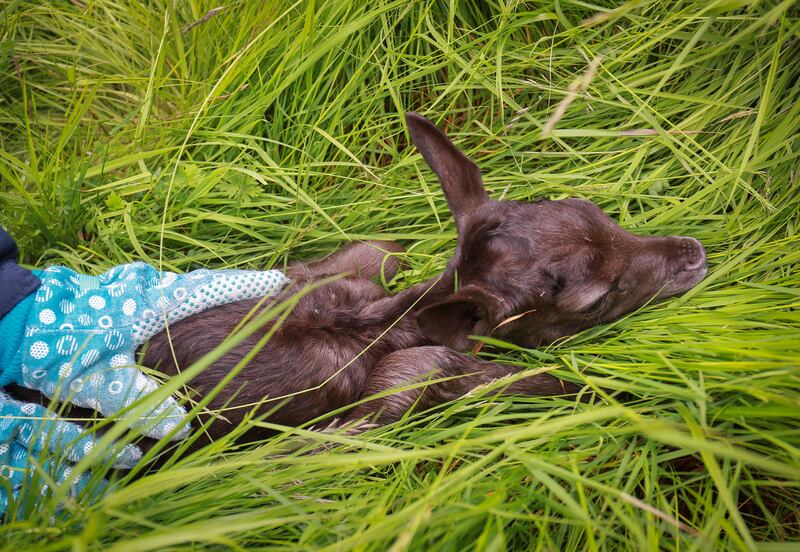
So far this year 81 deer have been captured and tagged by Ciuti and his students, and about 17 of the males have been fitted with tracking devices from the Swansea Lab for Animal Movement, where Holly English studied for her master's. "It's like a Fitbit for animals," she explains. English is researching animal movement. She was first enthralled by wildlife when watching a documentary about African wild dogs when she was 10. "My mother said, 'Oh you want to be a zoologist!' and now I'm a zoologist," she says. "And African wild dogs will be one of my studies."
We continue our trek through the undergrowth in what Moore calls “a forensic line”. Everyone, except this journalist, who is wearing a good-suit jacket, is in T-shirts, waterproofs and sensible shoes. They’re also all wearing gloves, both to prevent getting human scent on the deer and to protect their hands. Nobody speaks. The only sounds are the songbirds and the swishing of waterproofs on grass.
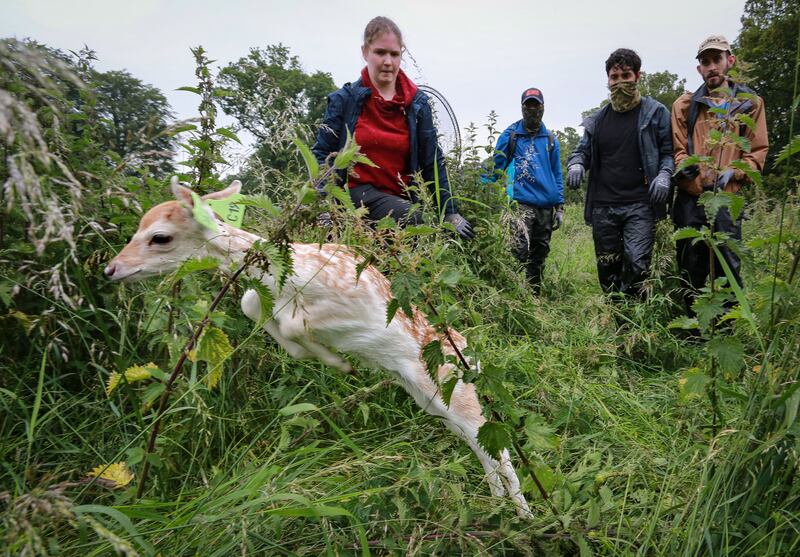
Fawns are not the only things living here. Sometimes we scare pheasants and rabbits out into the open. At one point we see two blue sleeping bags drying on a tree. Occasionally someone gets entangled in the brambles. "You always expect the tropical rainforests to be the bits with the spiky plants," sighs Adam Smith, who is studying wildlife management but whose family refer to it as "deer stuff".
We are certainly doing deer stuff today. The fawn we just released had a Bambi-like light brown colouring and was dappled with white spots. They recorded this colour as “menil”. There are three colour variations among the fallow deer in the park: menil, common (which is slightly darker, with white spots) and a darker, more even brown. “There are also white variations,” says Moore. “But we don’t have them here.”
Which colour is the most common? “I would say ‘common’,” says Smith, but he makes me feel better about my question by noting that, in other herds, “common” is actually uncommon.
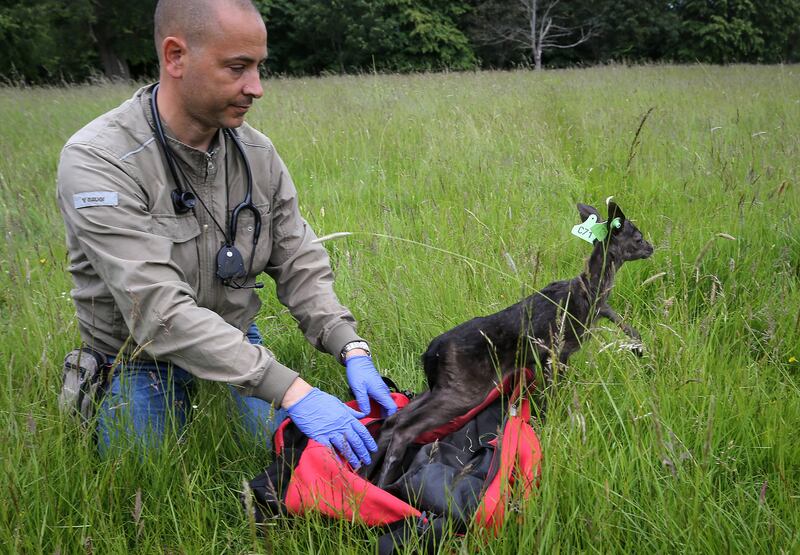
The next fawn we come across is huddled in a clump of nettles, and is dark brown in colour. She bolts from the weighing bag a lot more quickly than the first fawn. Ciuti is fascinated by this part of the process. He explains that one of his PhD students, Bawan Amin, is researching deer personality and how that affects behaviour. Some fawns are calmer and less agitated when captured; others “are not so brave and can’t cope with human presence and just run”.
They’re not yet entirely sure how this will play out over a deer’s lifetime, but they already know that more agitated, skittish male fawns are much quicker to leave their mothers and join the male herd. “There are papas’ boys and mamas’ boys,” says Ciuti.
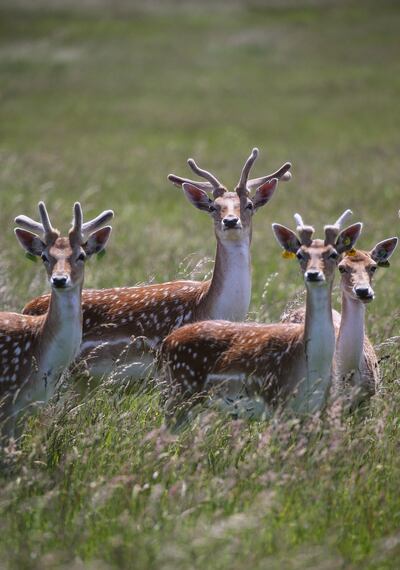
Another of the studies being undertaken, by a PhD student named Laura Griffin, is of human-deer interaction. This is of great interest to Moore, because over the past five years there have been increasing issues with people feeding the deer.
This is bad. It's bad for their nutrition and their teeth. It encourages unnatural behaviour (Holly English tells a story about a deer eating through a plastic bag to get at the carrots inside), and it's potentially dangerous for the humans doing the feeding. One young woman was recently mildly injured after feeding a full Twix to an overeager buck. Moore blames the increased feeding on the rise of Facebook and Instagram. "They all want a selfie beside the deer," he says, and he sighs.
The deer taggers care deeply about these animals. They occasionally even use unscientific words such as "magnificent" and "beautiful". A master's student named Matthew Quinn mentions the adrenaline rush he gets when he spots a fawn curled up in the grass. Moore says he's regularly struck by this animal's grace.
They also talk about their feelings when they come across dead fawns. They’ve found about 12 that have died from the weather or from fox or dog attacks. “They’re wild animals,” says Adam Smith. “There’s always going to be casualties. It’s obviously sad, because you care about them and want them to live, but at the same time you realise it’s food for the next level of the food chain.”
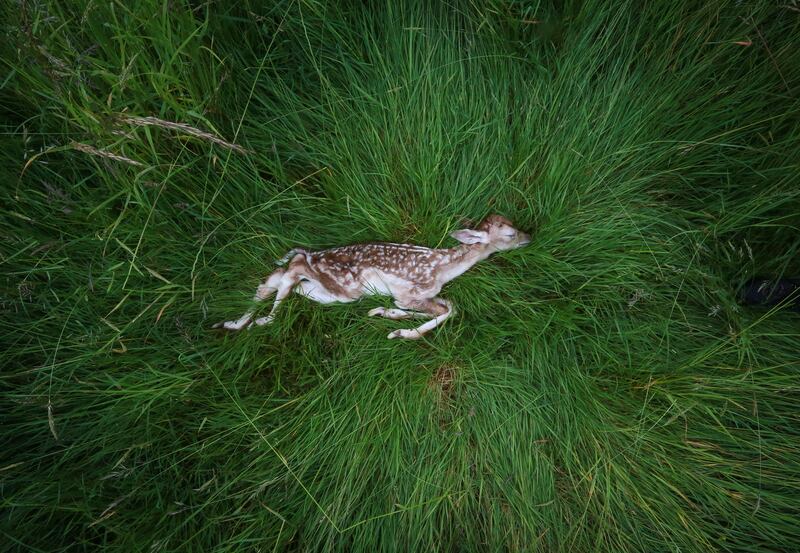
How does this compare to other fieldwork? “I’ve done fieldwork now in a few different countries, and this is the most fun,” says English. “It’s very hands-on. There’s a big team of us out doing it together.”
"And if you're the one who spots a fawn, you get to name it," says a student named Sarah Keenan.
Consequently there are deer in the park named Jango Fett and R2D2, thanks to Srivats Chari, a Star Wars obsessive, one called Prawn the Fawn, thanks to Smith, and another named Turnip because, according to Ioannidis, “he looked like a turnip.”
Holly English gets the fawn-naming prize, however, after naming one in tribute to one of her favourite singers. What did she call him? "Fawn Bon Jovi. "
















